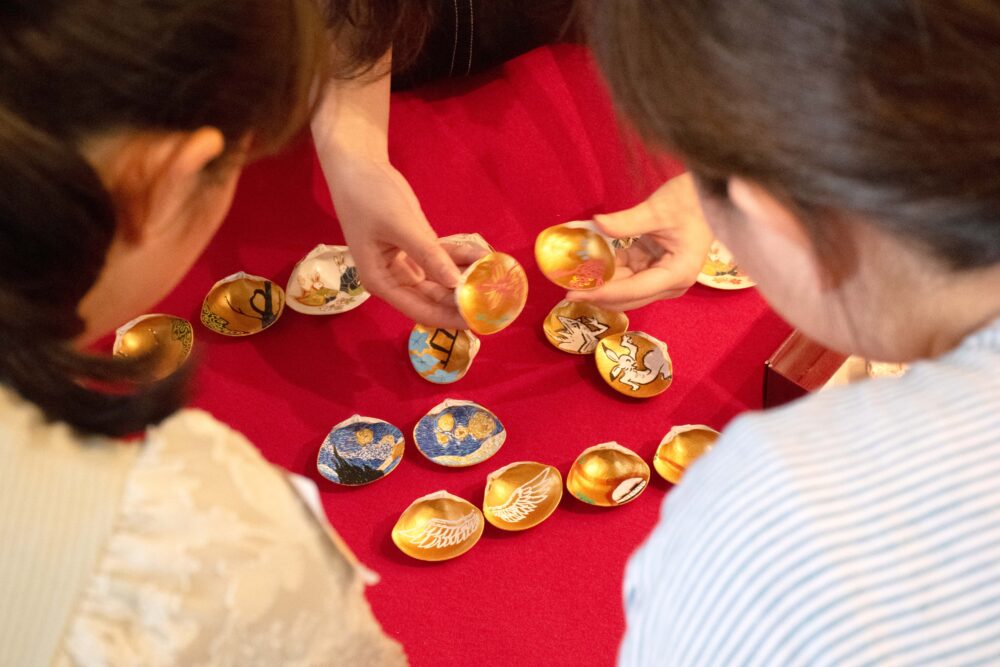An elegant game that brings together two destined people... What is "kaiawase"?

An elegant game that unites two destined people...
Why has "shell matching" become a symbol of "good relationships"?
"There's only one perfect match."
One shell that has such romantic properties is the clam shell.
The ancient Japanese traditional game of "shell matching" is an elegant and meaningful game that makes use of the characteristics of clams.
But actually, this isn’t just an old-fashioned game.
While inheriting the elegance of the Heian period, during the Edo period it evolved into a kind of "charm that brings good fortune in love."
Why has it become such an indispensable part of a bride's bridal accessories?
Let's take a look at its history and ideas.
■ The origins of shell matching, a "love game" from the Heian period?
The prototype of shell matching actually appeared in the Heian period.
Its roots lie in the "kaioi" (shell covering) that was popular among princesses. The rules are simple.
All you have to do is find one shell and its "true partner" and fit it together perfectly.
But this game is actually quite profound.
Clams have the unique property of never mating with anyone other than their original pair.
In other words, this game was also a symbol of searching for one's soulmate, or "the one."

■ Towards the crystallization of beauty... A story told by shells like picture scrolls
As time passed, shell matching evolved from a simple game to an art form.
Heian period aristocrats would paint beautiful pictures on the inside of shells and decorate them gorgeously with gold leaf and lacquer.
Many of the items are themed around The Tale of Genji or waka poetry, and are like art pieces that contain small stories.
Furthermore, the "kaioke" (shell bucket) in which these items are stored is also a luxurious masterpiece decorated with lacquer and maki-e.
No longer merely a toy, they have become something like a love letter, an expression of love and beauty.

■ Clams = the perfect couple? Their evolution as a lucky charm
The clam's unique characteristic of being the only thing that fits perfectly eventually evolved into a symbol of marital harmony.
It has also become linked to Buddhist thought since the Middle Ages, and has taken on a spiritual meaning of "two people bound together by karma from a previous life."
During the Edo period, this symbolism was further strengthened, and shell matching became established as a "matchmaking item."
The custom of bringing a set of shells and a shell bucket as part of a bride's dowry became widespread.
It was filled with the bride's family's wishes for a happy married life.

■ The Edo boom arrived! It became a "must-have item for brides"
Shell matching became extremely popular among samurai and wealthy townspeople alike.
Especially at weddings, "shell matching" has become an indispensable symbol of a "happy couple."
The craftsmen of the time would delicately paint seasonal flowers, birds, the moon, and other auspicious objects on the inside of the shells, creating one jewel-like piece after another.
"A perfect match," "Blooming beautifully," "Wishing for prosperity" -- filled with such thoughts, shell matching is a veritable "Japanese love story."
■ That is why the desire for a good relationship remains today
Even today, shell matching is sometimes featured at exhibitions of traditional crafts and weddings.
This is because, rather than being simply an old-fashioned game, it is imbued with the romance and prayers of the Japanese people who hope to "meet the one person of their destiny."
If you wish to find a perfect match with someone...
Why not entrust your wishes to an elegant shell that has been handed down for over a thousand years?


